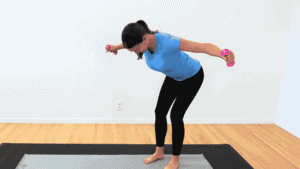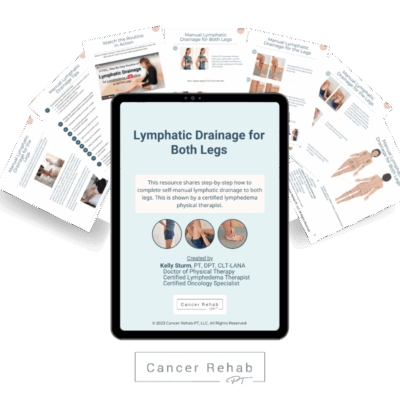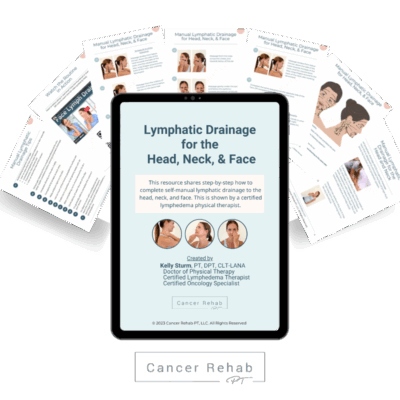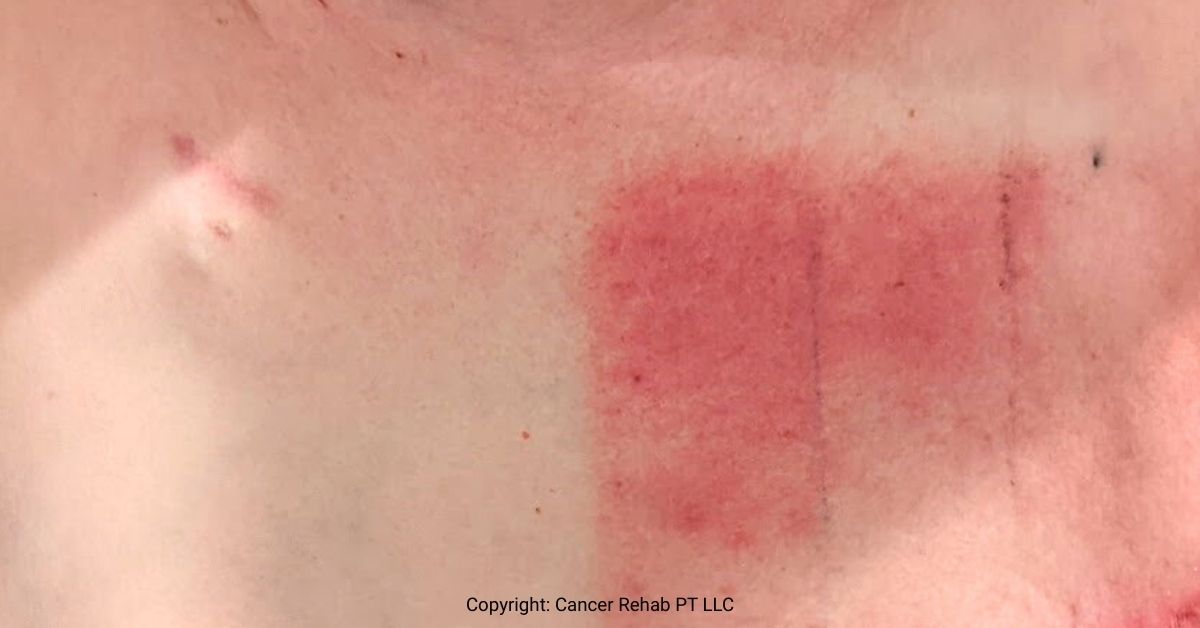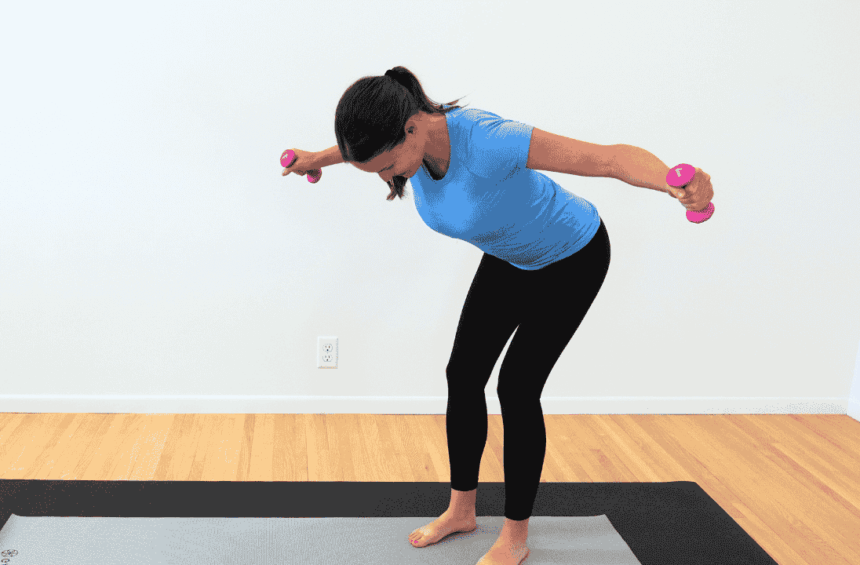Radiation therapy is one of the most effective treatments for many types of cancer. It uses high-energy rays to damage cancer cells and stop them from growing and dividing. It successfully treats cancer, but unfortunately, it often causes side effects, such as fatigue and tightness in the treated area.
If you’re wondering how to reduce the side effects of radiation therapy, there are specific actions you can take before, during, and after your therapy appointments to make cancer treatment more comfortable and support your body’s healing process.
What Are the Side Effects of Radiation Treatment?
Radiation side effects typically fall into two categories: early (acute) and late (chronic) side effects.
- Early side effects develop during or shortly after your treatment and usually improve within a few weeks after treatment ends. They can include skin irritation, fatigue, hair loss, swelling, and feeling sick.
- Late side effects may appear months or even years after your radiation treatment is complete. These side effects can include permanent skin changes, tightness, and a chronic condition called lymphedema.
There are also radiation therapy side effects that can develop in the specific area of your body receiving treatment. For example, radiation for breast cancer can sometimes change the size and shape of your breasts.
The severity of side effects varies greatly from person to person.
Some people experience very few or mild side effects, while others have more significant reactions to treatment. Your radiation oncology team will discuss what you might expect based on your specific treatment plan and radiation dose.
How to Reduce Fatigue After Radiation
Radiation-related fatigue is different from normal tiredness. It often feels like extreme exhaustion that doesn’t improve with rest. This fatigue typically starts during radiation treatment and can continue for weeks or even a couple of months after.
Many cancer patients describe radiation-related fatigue as feeling completely drained, having heavy limbs, or lacking the energy to do simple tasks. This fatigue develops because your body is working hard to repair healthy cells damaged during treatment.
Here’s how to reduce fatigue after radiation therapy:
- Listen to your body and rest as much as you need to
- Prioritize sleep and aim for at least 8 hours of quality sleep each night
- Brief, gentle exercise like walking for 10-15 minutes can boost your energy and reduce fatigue
- Physical therapy stretches can reduce uncomfortable symptoms and improve energy levels
How to Reduce Skin Reactions After Radiation
According to the American Cancer Society, almost everyone experiences skin reactions after the radiation treatment begins. The skin in the treatment area may become red, dry, sensitive, and itchy, similar to a sunburn. In some cases, treated skin can blister, peel, or develop a rash.
For most people, skin reactions usually resolve a few weeks after they finish the radiation treatment. However, sometimes the treated skin may remain darker or more sensitive than before in the long term.
Here’s how to reduce skin reactions after radiation therapy:
- Be gentle with your skin and wash the treatment area with lukewarm water and mild, fragrance-free soap
- Skip deodorants, perfumes, alcohol-based lotions, or products containing metal (like aluminum) on the treatment area
- Moisturize the radiation treatment area with approved lotions or creams as directed by your radiation oncologist or medical team
- Keep the treatment area out of direct sunlight and covered, ideally with cotton fabrics that won’t rub or irritate your skin
How to Reduce Swelling After Radiation
Swelling (edema) can develop in areas being treated with radiation, particularly after radiation to the head, neck, breast, or limbs. This happens because radiation can damage tiny blood vessels and lymphatic vessels, which normally help drain fluid from tissues.
When these vessels don’t work properly, fluid builds up, causing swelling. You might notice tightness, a feeling of heaviness, or visible puffiness in the affected area.
Here’s how to reduce swelling after radiation therapy:
- When possible, keep the swollen area elevated above heart level
- Wearing properly fitted compression sleeves or stockings can help prevent fluid buildup
- Movement helps pump fluid out of swollen areas; try these Beginner Stretches for Radiation Recovery or Advanced Stretches for Radiation Recovery
- Use manual lymphatic drainage techniques to help encourage fluid movement
In some cases, the swelling can develop into lymphedema, a chronic condition that requires ongoing management. Cancer Research UK estimates that about 20% of people will develop arm lymphedema after breast cancer treatment, especially if you had radiation therapy to the lymph nodes.
Taking proactive steps can help you prevent lymphedema or even naturally reverse it in the early stages. Early intervention is key to reducing your risk of long-term swelling.
How to Reduce Hair Loss After Radiation
Unlike chemotherapy, which can cause hair loss throughout your body, radiation only causes hair loss in the specific area being treated. This happens because radiation damages the hair follicles in the treatment field.
If you’re receiving radiation to your head, you might lose some or all of the hair on your scalp. Radiation to other body areas can cause loss of body hair in those specific regions.
Hair loss typically begins 2-3 weeks after starting radiation and may be temporary or permanent, depending on the radiation dose. Your hair can regrow after the treatment is over, but it may look and feel different from before. For example, it can change color or become thinner.
Here’s how to reduce hair loss after radiation therapy:
- Keep your skin clean, moisturized, and protected from extreme temperatures
- Be gentle with existing hair and use mild shampoo and soft brushes
- Explore wigs, scarves, hats, or other head coverings before hair loss begins if you think you’ll want them
- Be patient with regrowth and remember that hair may take several months to grow back
How to Reduce Nausea After Radiation
Nausea and vomiting are common side effects of radiation therapy, especially when the treatment is directed at the brain, abdomen, or pelvis. Radiation can irritate the lining of the stomach or send signals to the nausea center in your brain, triggering feelings of queasiness.
Radiation-related nausea typically occurs within a few hours after treatment and may last for several hours. For some patients, it becomes a persistent problem throughout the cancer treatment course.
Here’s how to reduce nausea after radiation therapy:
- Take prescribed anti-nausea medications as directed, often before treatment and on a regular schedule
- Instead of three large meals, try five or six small meals throughout the day
- Opt for toast, crackers, clear broths, and other mild foods that are easier to digest
- Some physical therapy techniques, like diaphragmatic breathing exercises, can help manage nausea symptoms
Radiation Therapy for Breast Cancer Side Effects
Radiation therapy is a common treatment after breast-conserving surgery (lumpectomy) or sometimes after mastectomy. The radiation targets the breast area and sometimes nearby lymph nodes. Besides the general side effects like fatigue and skin reactions, breast radiation has some specific side effects.
During and after breast radiation, you may notice the treated breast becoming red, swollen, and tender. The skin may peel or blister in some areas. Your breast might feel heavier or firmer than usual.
These changes often peak at the end of treatment and improve over the following weeks.
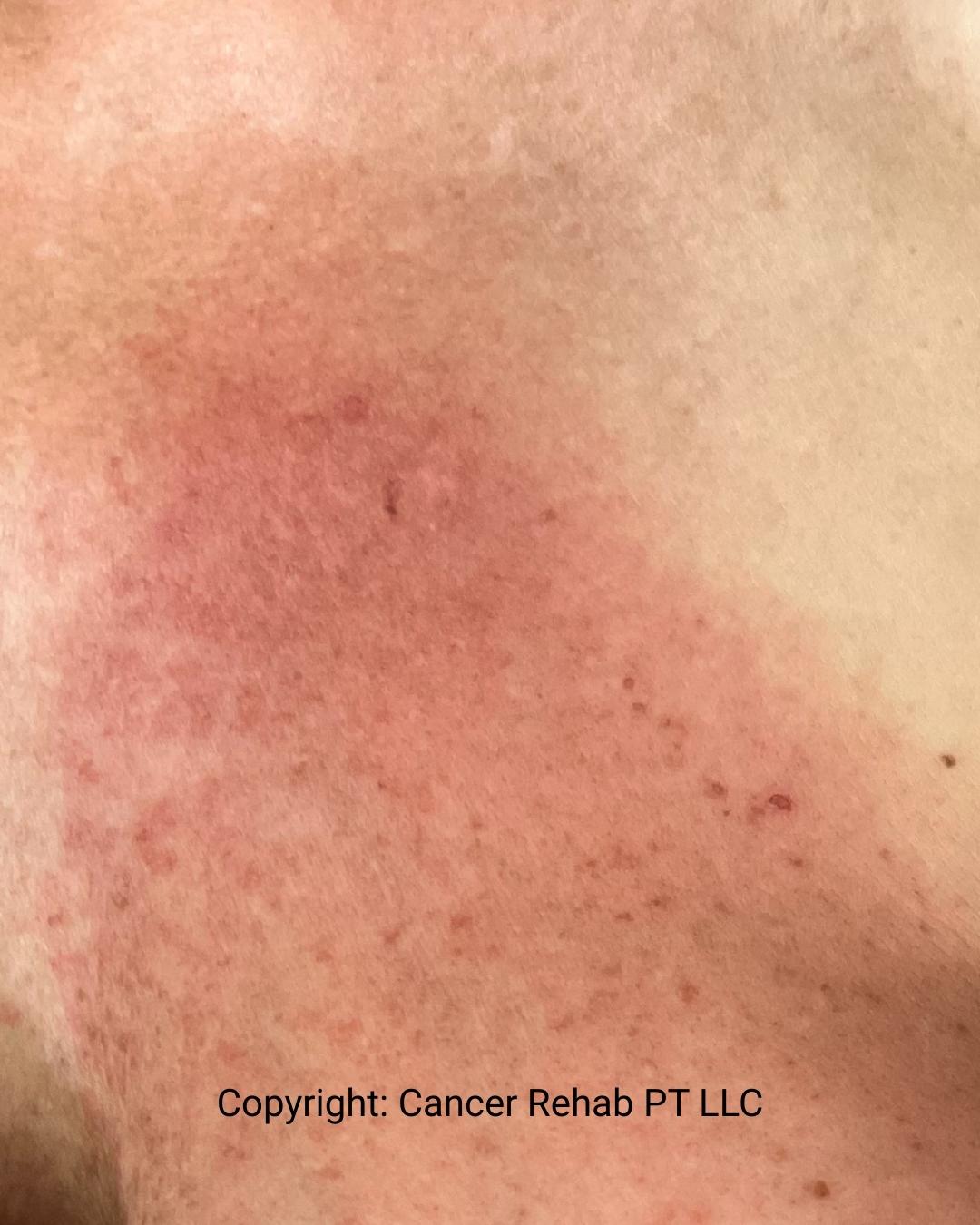
Long-term side effects can include permanent darkening of the skin, breast swelling, firmness, and changes in breast size or shape. Some women develop lymphedema (swelling in the arm or chest) if lymph nodes are treated.
Tips for breast radiation side effects:
- Wear loose and soft clothing, such as cotton bras without underwire, or go braless if comfortable
- Watch out for signs of lymphedema and report any new swelling in your hand, arm, breast, or chest to your doctor
- Physical therapy exercises can help with shoulder mobility and chest tightness
- If you had surgery before radiation, proper scar care can reduce tightness in the breast area
Radiation Therapy for Head and Neck Cancer Side Effects
When receiving radiation therapy to the head and neck area, you may develop a sore mouth and throat that makes eating and swallowing difficult. Your mouth may become dry as the salivary glands are affected.
You might also lose your sense of taste or develop taste changes. Your voice may become hoarse or weak. The sensitive skin on your neck can become irritated. However, these side effects typically go away once your treatment is complete.
Long-term effects can include permanent dry mouth, changes in taste, dental problems (including an increased risk for tooth decay), stiffness in the jaw, and mouth sores.
Tips for head and neck radiation side effects:
- Stay on top of your mouth care and regularly brush your teeth with fluoride toothpaste
- Until your mouth gets more comfortable, eat soft foods that are easier to swallow
- Try these exercises for neck stiffness
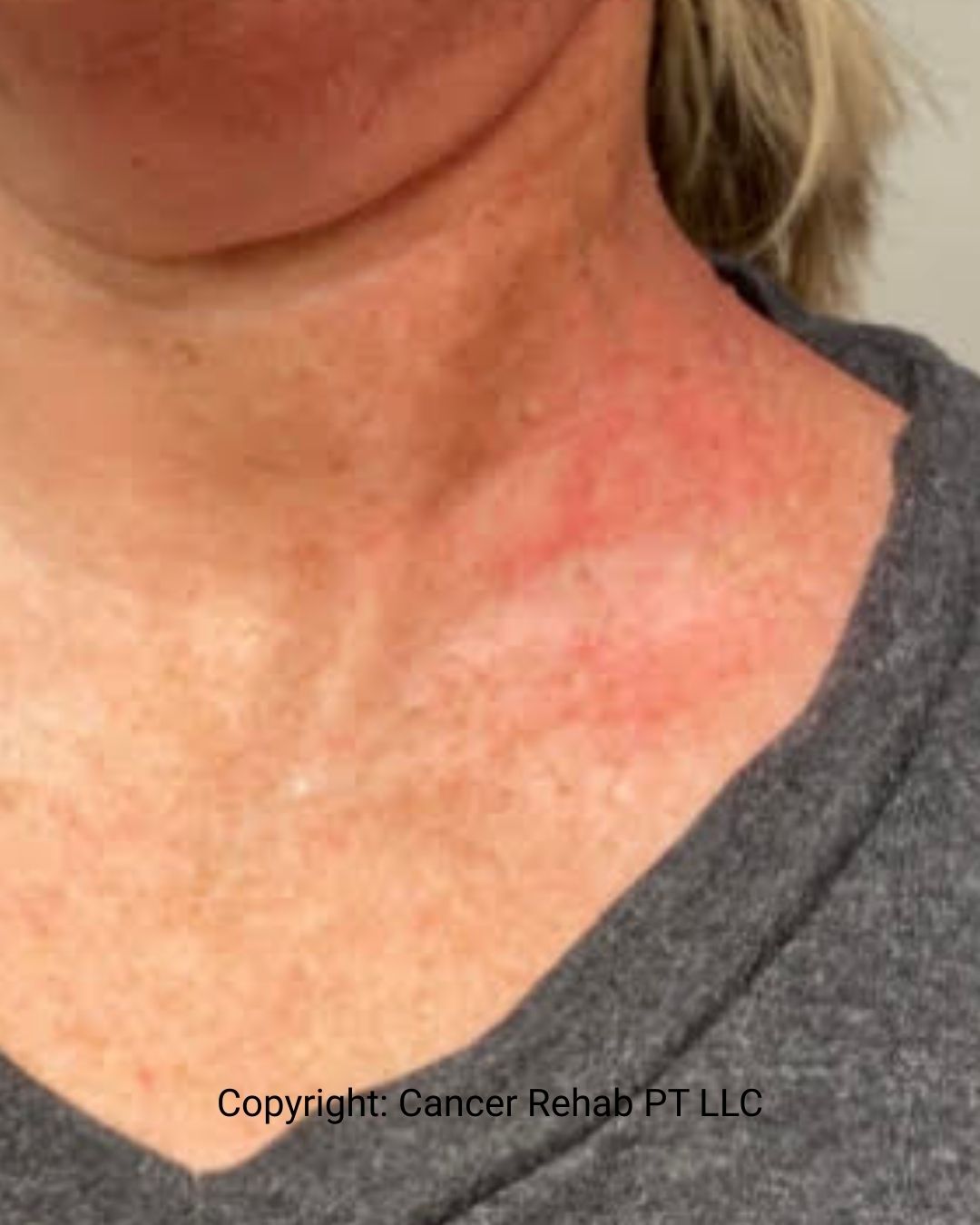
Radiation Therapy to the Abdomen Side Effects
Radiation to the abdomen targets cancers in organs like the stomach, liver, or pancreas. These organs can become irritated by radiation.
The most common side effects include nausea, vomiting, loss of appetite, and diarrhea. You might feel bloated or have stomach cramps.
Many people lose weight during abdominal radiation because eating becomes difficult.
Most digestive side effects improve within a few weeks after treatment ends, but some people experience lasting changes in digestion.
Tips for abdominal radiation side effects:
- Have your largest meal when you feel least nauseated, often in the morning
- Take anti-nausea medications recommended by your doctor
- Stay away from fatty, spicy, or gas-producing foods during treatment
Radiation Therapy to the Pelvis Side Effects
Pelvic radiation treats cancers of the prostate, cervix, uterus, rectum, bladder, and other pelvic organs. The radiation field includes many sensitive structures, such as the bladder, rectum, and reproductive organs.
Common side effects include frequent or painful urination, diarrhea, rectal pain or bleeding, swelling, and skin reactions in the treatment area.
You may also experience sexual side effects with pelvic radiation. Women may experience vaginal dryness, narrowing, or discomfort. Men may develop erectile dysfunction. Both men and women can experience changes in fertility.
Tips for pelvic radiation side effects:
- Women may need to use dilators to prevent vaginal narrowing and scarring like these Intimate Rose Vaginal Dilators (you can use the code KELLY39 to get $5 off!)
- Pelvic floor exercises can help with bladder control and bowel management
- Physical therapy exercises and techniques, like wearing compression shorts, can help reduce swelling and prevent lymphedema in the pelvic area
When Do Radiation Therapy Side Effects Go Away?
It depends. Many factors could influence how long it takes for your radiation therapy side effects to go away, including how much radiation you received.
Early side effects like skin reactions and fatigue typically improve within 1 to 2 months after completing treatment.
Your energy will likely return gradually, not all at once, and some changes might take longer than others (for example, hair regrowth can take 3 to 6 months).
Late side effects can develop months or even years after treatment ends. Some occur during the radiation treatment and just never go away. These can include:
- Tissue fibrosis (hardening or thickening)
- Lymphedema
- Skin changes
- Joint stiffness
- Organ-specific effects depending on the treatment area
Some late side effects improve slowly over time, especially with proper management and care. Early intervention can also often prevent these side effects from getting worse or becoming permanent.
There are steps that you can take to minimize uncomfortable symptoms and improve your quality of life. You can find physical therapy resources in Breast Cancer Rehab.
How to Reduce Side Effects of Radiation Therapy Naturally
Physical therapy is one of the most effective natural approaches for managing radiation side effects. For radiation rehab specifically, it usually includes:
- Stretching exercises to help maintain mobility and prevent stiffness and tightness in the treated area
- Soft tissue mobilization techniques to reduce pain, improve range of motion, and help tissues heal faster after radiation therapy
- Exercises to reduce swelling and lower your risk of developing lymphedema
Skin care is also important because radiation therapy can cause skin changes and reactions.
Your cancer care team should recommend lotions and creams they recommend, but some of my favorite ones include Vanicream, Aquaphor, and Bass Farms.
Physical therapy always goes hand in hand with general health habits, such as eating a nutritious diet rich in whole foods and getting quality sleep. Your treatment team may also recommend nutritional supplements.
Some people also use complementary and alternative medicine, such as acupuncture.
Radiation Fibrosis
Radiation fibrosis is a long-term side effect that develops when tissues in the treatment area become thickened, stiff, and less flexible. It can develop months or even years after treatment. I often see radiation fibrosis peak at its worst around 3 months after radiation is completed, but it can build for up to 1-2 years later.
Physical therapy is one of the most effective ways to manage radiation fibrosis and recover your strength and mobility. It usually includes:
- Gentle stretching exercises to improve flexibility
- Manual therapy techniques to break up scar tissue
- Progressive strengthening exercises to rebuild muscle function
Early intervention is key. The sooner you begin physical therapy after noticing stiffness or limited movement, the better your outcomes are likely to be.
Lymphedema After Radiation Therapy Treatment
Lymphedema is a chronic condition that causes swelling in your arm, leg, or another body part. It’s a common side effect of radiation therapy because it can damage the lymphatic vessels and nodes that normally help drain fluid.
The risk of developing lymphedema depends on your specific treatment. For example, if you have both lymph node removal and radiation, you have a higher risk than if you receive radiation alone.
When lymphedema first develops, the swelling may come and go. However, without proper treatment, it can become chronic and progressively worse.
Untreated lymphedema not only causes discomfort and limited mobility but also significantly increases your risk of serious infections like cellulitis, which can be dangerous and require hospitalization.
Lymphedema often responds well to treatment, especially when caught early.
In some cases, particularly when treated in its earliest stages, lymphedema can be significantly improved or even reversed. Treatment typically includes:
- Lymphatic drainage massage
- Compression garments or bandaging
- Physical therapy exercises
- Meticulous skin care
If you notice persistent swelling in any area that received radiation, contact your healthcare provider right away.
How to Make Radiation Therapy Easier?
Educating yourself on what to expect from radiation therapy can sometimes make the treatment easier to handle. Stock up on recommended skin care products and comfortable clothes so you’ll have everything you need when treatment starts.
Some radiation therapy side effects are, unfortunately, inevitable. However, physical therapy can help you reduce many of them and prevent long-term issues like lymphedema.
You can find physical therapy techniques and exercises to help improve your quality of life after cancer in Breast Cancer Rehab.
FAQs
What Makes You Feel Better After Radiation?
Many people feel better during and after radiation when they eat a healthy diet, get enough rest, and do some form of gentle physical activity such as walking, even if it’s just for 10-15 minutes. Physical therapy exercises can also reduce pain, stiffness, and swelling. Educating yourself on what to expect during and after treatment can make you feel better mentally, too.
What Not to Do During Radiation Therapy?
During radiation treatment, avoid irritating the skin in your treatment area. Don’t use harsh soaps, hot water, perfumes, or alcohol-based products, and skip shaving if possible. Don’t remove the marking lines your radiation team places on your skin. Avoid excessive sun exposure on the treatment area, as your skin will be much more sensitive to sunburn. Finally, don’t hesitate to tell your healthcare team about side effects because trying to “tough it out” can lead to more serious problems.
How Much Weight Do You Lose During Radiation Treatment?
It depends on the treatment area and individual factors. For some people, the weight loss can be minimal. For others, especially with radiation to the head, neck, or digestive tract areas, it can be 5-10% of their body weight. Weight loss typically happens because of decreased appetite, nausea, taste changes, or difficulty swallowing.
What Does Radiation Fatigue Feel Like?
Radiation fatigue is different from normal tiredness and doesn’t usually improve with rest alone. Some people describe it as wearing a heavy weighted blanket all day, and simple tasks like showering or preparing a meal can feel overwhelming. It typically gets worse as your treatment progresses and then gradually improves over weeks or months. Gentle physical activity (such as walking for 10-15 minutes) and physical therapy exercises can help you increase energy levels.
What Lotion Is Good for Radiation Patients?
The best lotions for radiation patients are fragrance-free, alcohol-free products with minimal ingredients to avoid irritating sensitive skin. Some of my favorite brands include Vanicream, Aquaphor, and Bass Farms. Always check with your radiation team before using any product on your treatment area, as recommendations may vary based on your specific situation, and some ingredients can interfere with treatment effectiveness if used directly before radiation sessions.
What Are the Major Permanent Side Effects of Radiation?
Permanent side effects of radiation can include changes in skin texture and color in the treatment area, radiation fibrosis (scarring and stiffness), and lymphedema (chronic swelling). Depending on the treatment area, you might also experience long-term organ changes, such as bowel changes after pelvic radiation. The risk and severity of permanent side effects depend on many factors, including the radiation dose, treatment area, and individual factors like age and overall health.
Do You Ever Fully Recover From Radiation?
Most early side effects of radiation therapy resolve within 1 to 2 months after the treatment ends. However, some people develop long-term side effects, such as radiation fibrosis and lymphedema. Not everyone will develop these side effects. Even if you do develop permanent changes, physical therapy and lifestyle modifications can help you reduce them and maintain a good quality of life after treatment.
Looking for More Support with Radiation Therapy Side Effects?
Dealing with radiation side effects can feel overwhelming, but sometimes it’s possible to reduce them.
You can find specialized exercises and physical therapy techniques in Breast Cancer Rehab for common cancer treatment side effects, including:
- Arm lymphedema
- Axillary Web Syndrome (cording)
- Arm mobility after surgery
- Breast swelling and lymphedema
- Scar tissue
- Rehab after radiation
Side effects like pain, tightness, and swelling are common after radiation therapy, but they don’t have to be your new normal.
Learn more about Breast Cancer Rehab!

